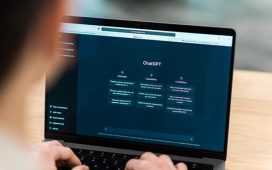One of the most popular new IoT communication technologies is Lora, a short- and long-distance link running on the Lorawan network protocol (more about this soon). Semtech, a major provider of Lora equipment and services, says Lora is based on Chirp Spreading Spectrum Technology (CSS). The Lora Gateway supports bidirectional communication to process messages between many Lora-based IoT platform and devices.
There is a lot of interest in LORA, a large-scale network solution which promises miles of range and low power consumption and is a perfect match for the Internet of Things. Telecoms providers are introducing the LORAs network because it operates on open spectrum and you can build your own network.
The LORA Alliance is committed to standardizing worldwide low power wide area networks (LPWANs) to enable Internet of Things (IoT) machines and M2M (Machine to Machine) smart cities and industrial applications. This article describes what you need to build a private Lora wide-area network solution that promises miles of range with low power consumption, is perfect for the Internet of Things, and how you can use it to send data from ARM Mbeds to end nodes and the cloud. LORA’s modulation technology uses PHY (Lorawan Network Protocol) at the physical level (MAC).
According to the LORA Alliance, Low Power Wide Area Networks (LPWAN) are expected to support most of the billions of devices predicted to be in the Internet of Things (IoT). The widely used Media Access Control Protocol (LORA) protocol (LORA) is a large-area network (Lorawan) defined by the Lora Alliance as an open standard, taking into account the energy-efficient nature of Lora and the fact that many devices for power supply rely on it [4]. The specification of the MAC protocol imposes limitations on the data rate and the touch cycle of LORAs, so that its relevant applications on site do not require real-time transmission.
In this chapter, we propose a similar approach to allow real-time applications in smart cities that would not be possible without Lorawan’s benefits from the long-term and energy-efficient nature of LORAs modulation. In this paper, we will explore how to use LORA and Lorawan protocols to transmit ambient sensor data between IoT platforms and IoT gateways. Given that Lorawan is a protocol with low power consumption and high transmission capacity, it is an ideal long-range wireless protocol for IoT devices.
In the following practical paper, we will examine how we can use the LORA and Lorawan protocols to transmit and receive sensor data over considerable distances between IoT devices with a range of embedded sensors and IoT platforms. I will use an Arduino single-board microcontroller for IoT sensors and a range of sensors. The Arduino Sense is an excellent low-cost single-board microcontroller that learns how to acquire and transfer IoT sensor data.
If you don’t want to know anything about Linux boards, nodes and channels, you can opt for preconfigured Lorawan devices. These are available for microcontroller platforms such as Arduino, single-board computers such as Raspberry Pi and Simfony Mobile, which offer easy-to-manage and customizable kits with the SimFony Mobile Management Platform and cloud infrastructure. The hardware you need is a device gateway, much like you would set up a Wi-Fi network.
This type of network infrastructure relies on Adaptive Data Rate (ADR) schemes to manage individual data rates (RF) of the connected devices to maximize battery life and the total available system capacity.
All communications on the Lorawan network are encrypted with a network session key from the terminal to the Lorawans network server, which is responsible for routing messages between the device and a Lorawan application where the application session key is used to encrypt data between the terminal and the application.
All device data flows through the Lorawan network to the AWS IoT Network Server, which is integrated into AWS IoT Services. Secure access and network identification are managed by the network server, not the IoT, and all Lorawan devices do not have the IoT SDK. Terminals on the Lora interface communicate with the gateways via RF.
Learn how to set up hardware IoT platforms to take advantage of Lorawan connectivity to provide things like connectivity. Sync device information and attributes between the AWS IoT service and the network server. With the ability to abstract AWS IoT into a shadow service, you can set the state of play between AWS IoT, the Lorawan network and Lora-enabled devices at any time.
Extensive global presence for public networks and use in the real world. Large range of up to 10 km under optimal conditions, enabling the deployment of large-scale projects such as intelligent parking structures, agricultural monitoring, weather monitoring and asset tracking.
LORAaR is a wide-ranging Wide Area Network Wireless Spread Spectrum Modulation technology. An open technology standardized by LORA Alliance, designed for the low-power wide area networks required for the IoT, working on unlicensed frequencies to ensure global interoperability and high scalability. Interest in IoT 4.0 applications of Lora technology is growing at an impressive rate.
Other manufacturers of Lora and Lorawan devices (sensors, boards, modules, gateways and more) that license Lora intellectual property include STMicroelectronics, Microchip, MCF88, AllThingsTalk, Gumstix, Adeunis, Netvox Technologies, Telit, Leader IoT Platform, Strong Industrial IoT Device Management, Edge Platform, Libelium, Yokogawa Electric Corporation, Lite and others.
Everything depends on what you are looking for Manufacturers of IoT platforms (OEMs) can achieve faster time-to-market by utilizing existing reference design policies proposed by manufacturers based on their expertise in IoT and the Lorawan network, Lorawan embedded IoT connectivity and design best practices to optimize sensor and device connections and data transmission over the IoT network. You can also use LORA Alliance’s global and regional specifications, parameters and Lora Alliance certification programs to develop IoT sensors and devices to connect to the network.













